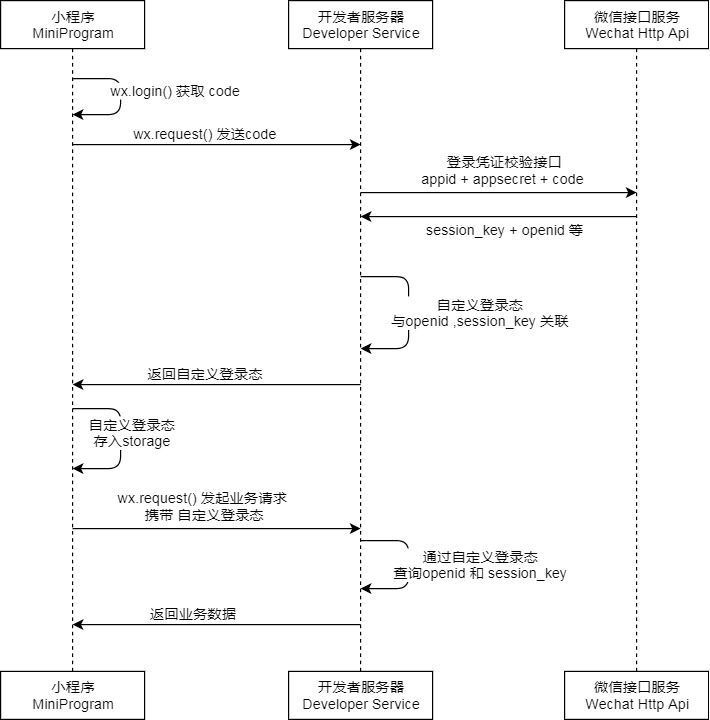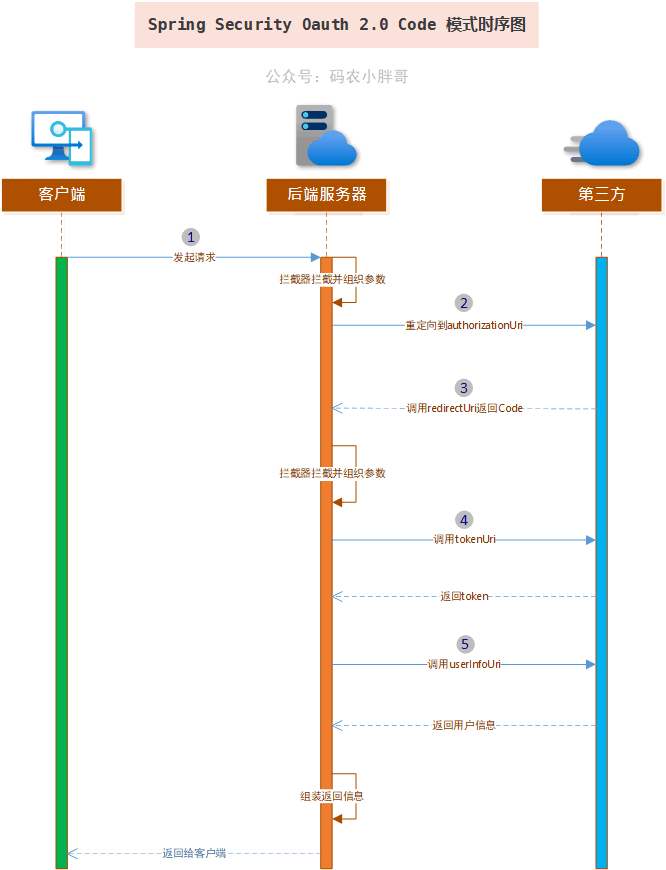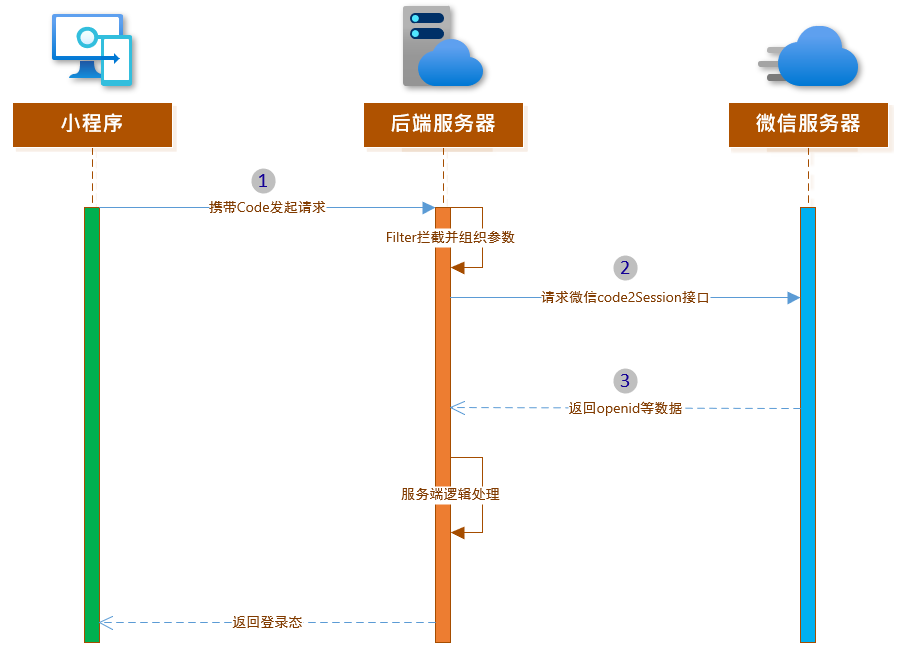Spring Security 整合 微信小程式登入的思路探討
阿新 • • 發佈:2021-03-05

## 1. 前言
原本打算把**Spring Security**中**OAuth 2.0**的機制講完後,用小程式登入來實戰一下,發現小程式登入流程和**Spring Security**中**OAuth 2.0**登入的流程有點不一樣,就把寫了半天的東西全部推翻了。但是,但是過了一天之後,突然感覺又可以了。我們來一起試一試。
## 2. 小程式登入流程分析
小程式的登入流程是這樣的:

而在**Spring Security**中的**OAuth 2.0** `Code`模式是這樣的:

從這兩張圖上看最大的差別就是微信小程式中獲取`code`不需要通過後端伺服器的呼叫,而**Spring Security**中需要(第1步,第2步,第3步)。騰訊應該也是借鑑了**OAuth 2.0**,但是做了一些改動。
> 讓我放棄的也是這個差別,有沒有人能想到解決方法呢?
假如說小程式已經持有了`code`,它依然需要將`code`傳遞給後端伺服器來執行後面的流程。那麼我們能不能利用**圖2中第3個呼叫**`redirectUri`的步驟呢?換個角度來看問題第三方就是小程式反正它也是將一個`code`傳遞給了後端伺服器,只要返回登入狀態就行了,反正剩下的登入流程都跟小程式無關。我覺得它是可以的。在**Spring Security**中我們可以使用`code`通過`tokenUri`來換取`token`。那麼在微信小程式登入流程中,`code`最終換取的只是登入態,沒有特定的要求。但是後端肯定需要去獲取使用者的一些資訊,比如`openId`,使用者微信資訊之類的。總之要根據微信平臺提供的API來實現。通過改造`tokenUri`和`userInfoUri`可以做到這一點。
## 3. 思路借鑑
> 所有的猜想都沒有錯,而且我也實現了,但是改造成本過高了,寫了很多相容性的程式碼,如果不深入**Spring Security**,很難實現這,而且也不好理解。
為了簡化實現,我決定借鑑**Spring Security**中**OAuth 2.0**的思路。Filter攔截小程式登入URL,然後通過`RestTemplate`執行向微信伺服器請求獲取結果,處理後返回登入態。時序圖如下:

對應的虛擬碼實現:
```java
package cn.felord.spring.security.filter;
import org.springframework.http.ResponseEntity;
import org.springframework.security.web.util.matcher.AntPathRequestMatcher;
import org.springframework.security.web.util.matcher.RequestMatcher;
import org.springframework.util.Assert;
import org.springframework.util.LinkedMultiValueMap;
import org.springframework.util.MultiValueMap;
import org.springframework.web.client.RestTemplate;
import org.springframework.web.filter.OncePerRequestFilter;
import org.springframework.web.util.UriComponentsBuilder;
import javax.servlet.FilterChain;
import javax.servlet.ServletException;
import javax.servlet.http.HttpServletRequest;
import javax.servlet.http.HttpServletResponse;
import java.io.IOException;
import java.net.URI;
/**
* 小程式登入過濾器
*
* @author felord.cn
* @since 1.0.4.RELEASE
*/
public class WeChatAppLoginFilter extends OncePerRequestFilter {
private final RequestMatcher requiresAuthenticationRequestMatcher;
private final RestTemplate restTemplate;
private String appId;
private String secret;
private static final String WX_URL = "https://api.weixin.qq.com/sns/jscode2session";
public WeChatAppLoginFilter(String loginProcessingUrl, String appId, String secret) {
this.appId = appId;
this.secret = secret;
Assert.notNull(loginProcessingUrl, "loginProcessingUrl must not be null");
this.requiresAuthenticationRequestMatcher = new AntPathRequestMatcher(loginProcessingUrl, "POST");
this.restTemplate = new RestTemplate();
}
@Override
protected void doFilterInternal(HttpServletRequest request, HttpServletResponse response, FilterChain filterChain) throws ServletException, IOException {
// 攔截微信登入
if (requiresAuthenticationRequestMatcher.matches(request)) {
//todo 從request中獲取 code 引數 這裡邏輯根據你的情況自行實現
String jsCode = "你自行實現從request中獲取";
//todo 必要的校驗自己寫
Multi
